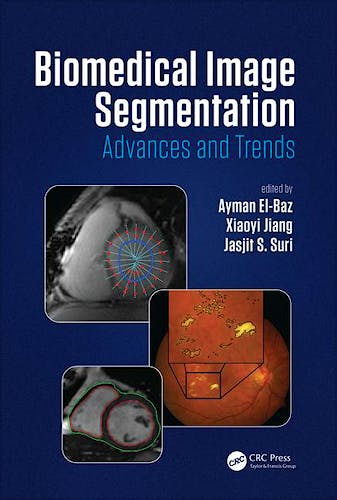

No hay productos en el carrito



Biomedical Image Segmentation. Advances and Trends
El-Baz, A. — Jiang, X. — Suri, J.
1ª Edición Noviembre 2016
Inglés
Tapa dura
526 pags
1000 gr
21 x 28 x null cm
ISBN 9781482258554
Editorial CRC PRESS
LIBRO IMPRESO
-5%
311,52 €295,94 €IVA incluido
299,54 €284,56 €IVA no incluido
Recíbelo en un plazo de
2 - 3 semanas
Description
As one of the most important tasks in biomedical imaging, image segmentation provides the foundation for quantitative reasoning and diagnostic techniques. A large variety of different imaging techniques, each with its own physical principle and characteristics (e.g., noise modeling), often requires modality-specific algorithmic treatment. In recent years, substantial progress has been made to biomedical image segmentation. Biomedical image segmentation is characterized by several specific factors. This book presents anoverview of the advanced segmentation algorithms and their applications.
Features
• Covers 3D image analysis and segmentation extensively
• Contains material fromworld-classexperts in image segmentation
• Highlights modality-specific algorithmic treatments, especially related to level sets
• Includes references to enhance further study
Contents
Brief Surveys of Segmentation Algorithm Classes. Level Set Segmentation: A Survey. Dynamic Programming Based Medical Image Segmentation. Optimal Graph-BasedSurface Segmentation and Applications. Medical Image Segmentation Incorporating Physical Noise Models. Atlas-Based Medical Image Segmentation. Applications. RetinalImage Segmentation. Spine Segmentation. Arterial Wall Segmentation. Segmentation of the Left Ventricle. Multi-Atlas-Based Simultaneous Labeling of Longitudinal DynamicCortical Surfaces in Infants. Rotational Slice-Based Prostate Segmentation. Automated Nucleus and Cytoplasm Segmentation of Overlapping Cervical Cells. Deformable Atlas forMulti-Structure Segmentation. A Variational Framework for Joint Detection and Segmentation of Ovarian Cancer Metastases. Incorporating Shape Variability in ImageSegmentation via Implicit Template Deformation. Cell Orientation Entrophy (COrE): Predicting Biochemical Recurrence from Prostate Cancer Tissue Microarrays. Left VentricleSegmentation from Cardiac MRI Combining Level Set Methods with Deep Belief Networks. Infrared Target Tracking, Recognition, an Segmentation Using Shape-Award Level Set.
Editor(s) Bio
Ayman El-Baz, Ph.D, is an associate professor in the Department of Bioengineering at the University of Louisville, Kentucky, USA. Dr. El-Baz has twelve years of hands-onexperience in the fields of bioimaging modeling and computer-assisted diagnostic systems. He has developed new techniques for analyzing 3D medical images. His work has been reported at several prestigious international conferences (e.g., CVPR, ICCV, MICCAI, etc.) and in journals (e.g., IEEE TIP, IEEE TBME, IEEE TITB, Brain, etc.). His workrelated to novel image analysis techniques for lung cancer and autism diagnosis have earned him multiple awards, including: first place at the annual Research Louisville 2002, 2005, 2006, 2007, 2008, 2010, 2011 and 2012 meetings, and the "Best Paper Award in Medical Image Processing" from the prestigious ICGST International Conference onGraphics, Vision, and Image Processing (GVIP-2005). Dr. El-Baz has authored or coauthored more than 300 technical articles.
Xiaoyi Jiang studied computer science at Peking University and received his Ph.D and Venia Docendi (Habilitation) degree in computer science from University of Bern, Switzerland. He was an associate professor at Technical University of Berlin, Germany. Since 2002, he has been a full professor of computer science at University of Münster, Germany. Currently, he is editor-in-chief of the Int. Journal of Pattern Recognition and Artificial Intelligence and also serves on the advisory board and editorial board of severaljournals including Pattern Recognition, IEEE Trans. on Systems, Man, and Cybernetics – Part B, and Chinese Science Bulletin. His research interests include biomedical imageanalysis, 3D image analysis, and structural pattern recognition. He is a PI of the new Cluster of Excellence "Cells in Motion" funded by the German Excellence Initiative, a senior member of IEEE, and a fellow of IAPR.
© 2025 Axón Librería S.L.
2.149.0